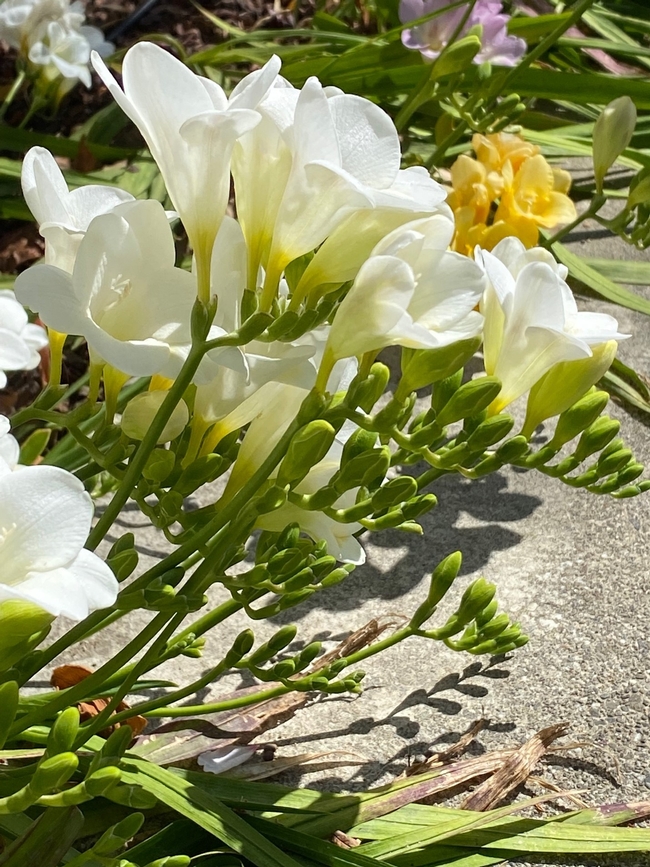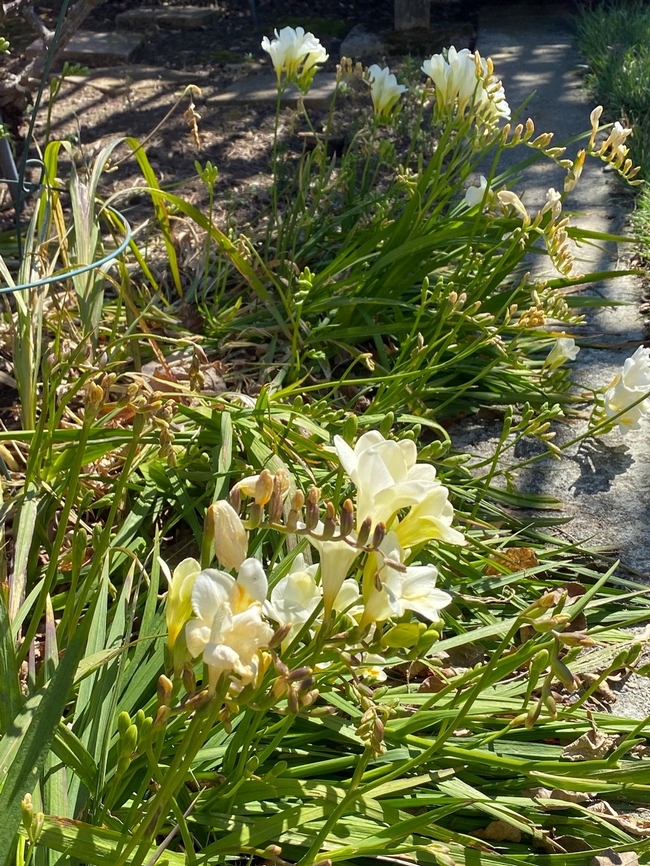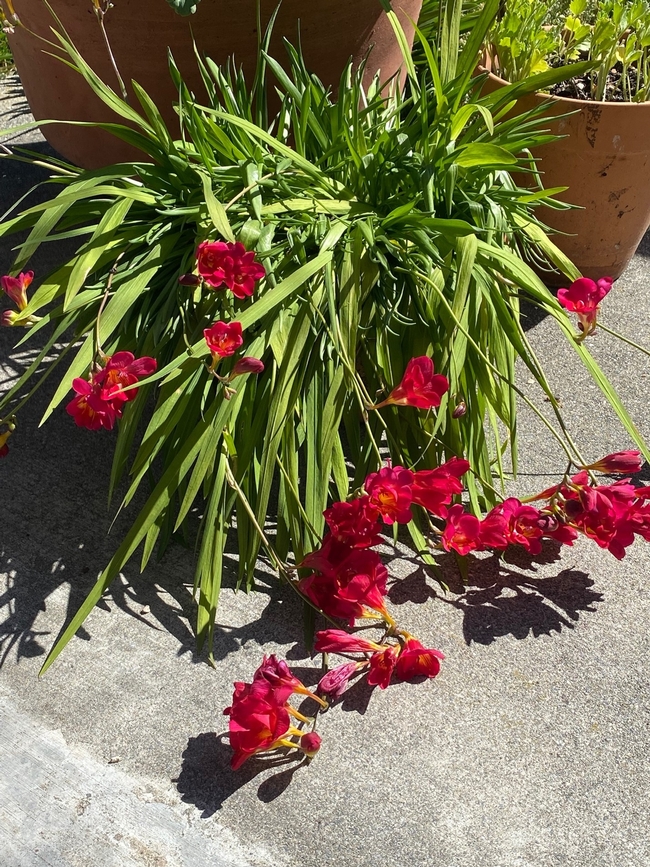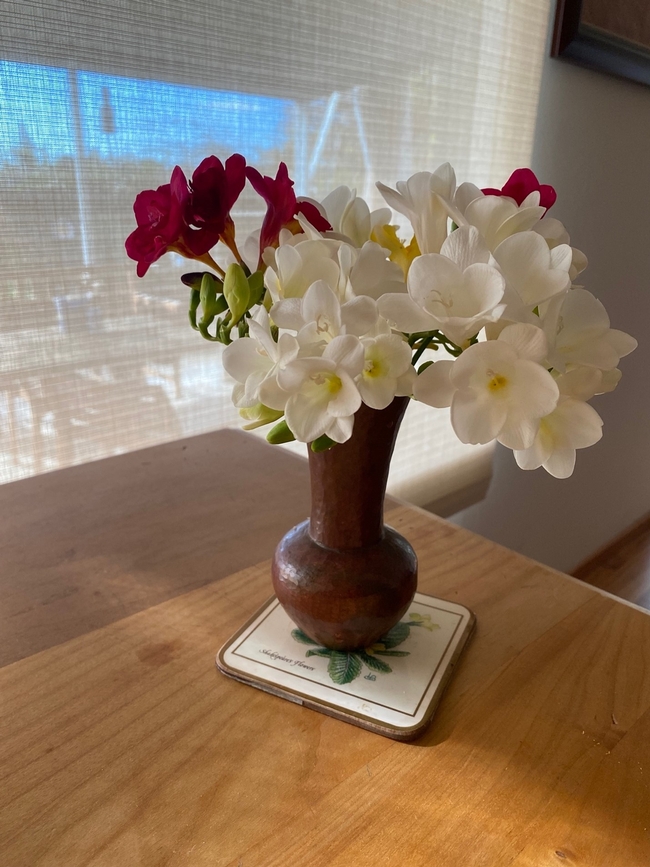- Author: Melissa Sandoval
One of my absolute favorite spring bloomers is Freesia. A native of South Africa, their requirement of a dry summer fits well with our Solano County weather. They bloom in early and mid-spring, so, right now!
I grow them both in the ground and in pots. The advantage of pots is that you can move them out of the place of honor when their blooms fade and their foliage yellows. If there is one downside to growing freesia's it is that to ensure next year's bloom you do need to leave the foliage on till it is dry. Then you gently remove it, leaving the corm and all its new baby corms in place. Eventually, they may become so crowded that you will need to dig and divide the corms and replant them the suggested 2” apart and 2” deep. I have had some plots in my garden for at least 10 years and to date, I still get beautiful fat blooms.
Most of the Freesias available now are hybrids. But my first experience was with Freesia alba, wonderfully sweet-scented with a creamy white trumpet-shaped bloom. I find the colored Tecolote hybrids fun to grow, but they lack the powerful scent of the F. alba. Also, the Tecolote hybrids do not stay true to color over time. I am finding lavender and white splotched with yellow in my big Freesia bed that I am sure I never planted. Like most hybrids, each subsequent generation is closer and closer to the original species they were created from.
Freesia's make excellent cut flowers. Because they open their blossoms over several days they last well over a week if cut as their first blooms is opening. A small bouquet can scent a large room. Then it feels like spring is in your home as well as your garden.







